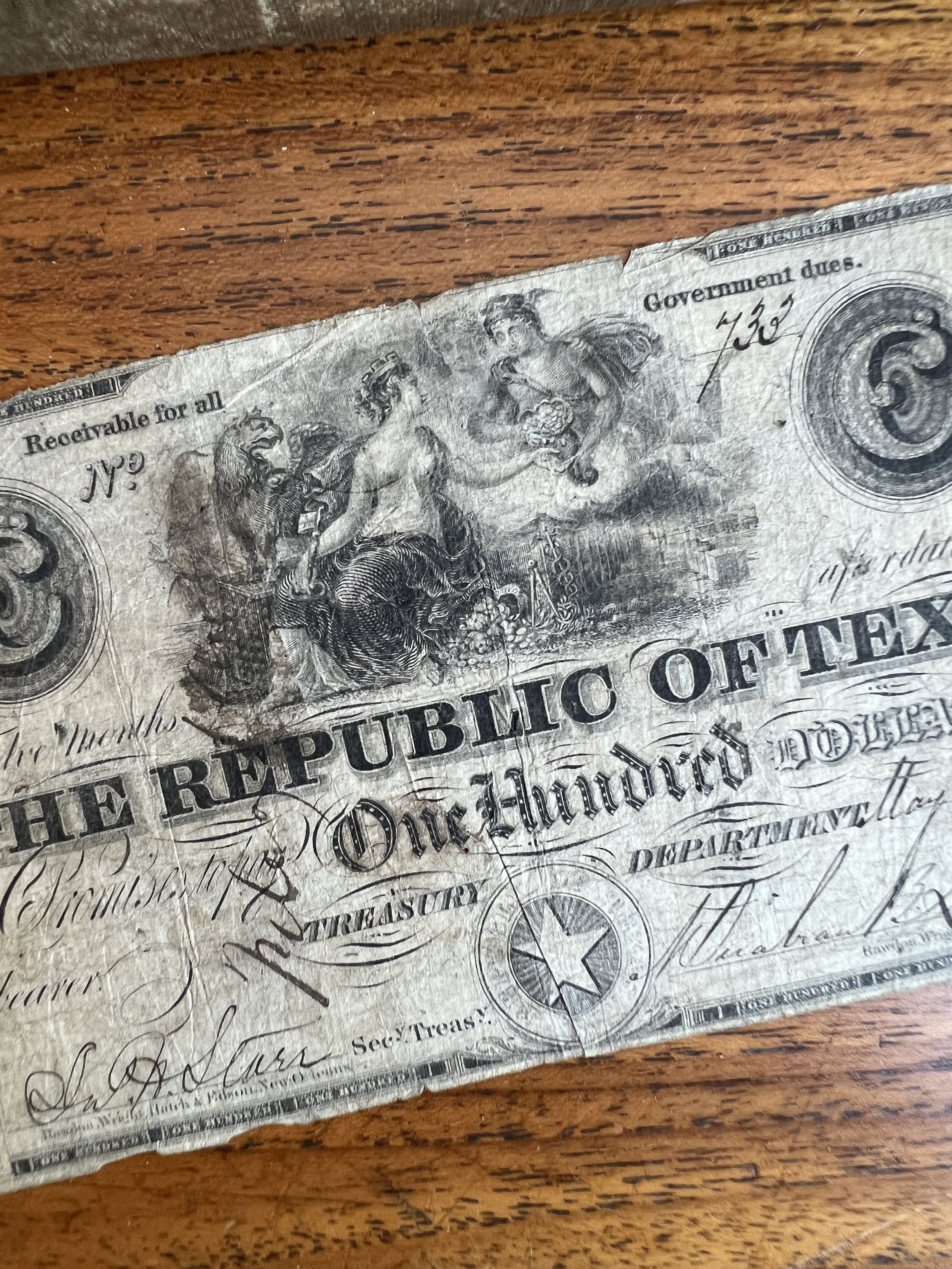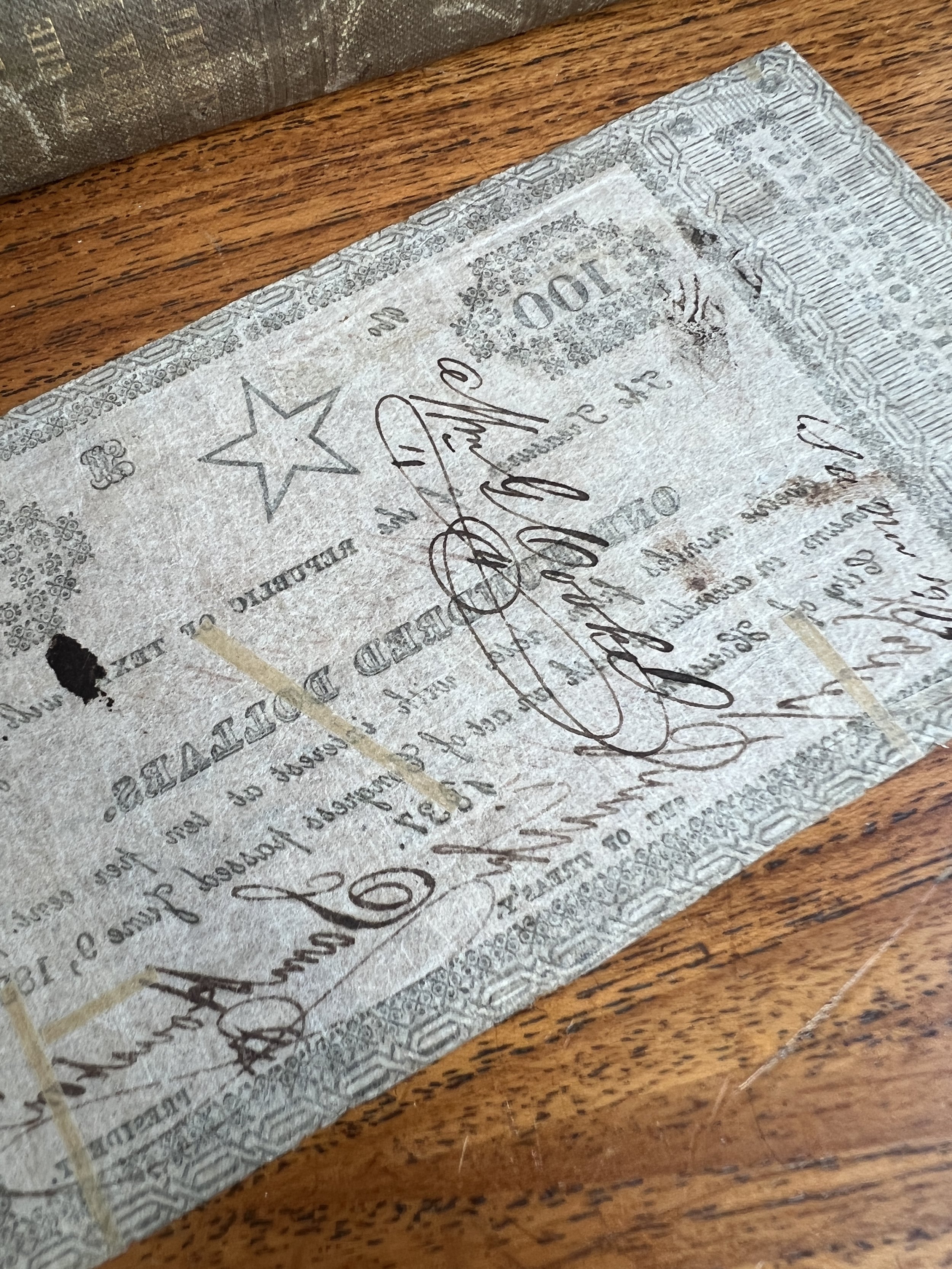➼ History & Context
The Texas government needed money to fund the War of Independence and the establishment of their nascent systems, especially with the rise of inflation and the financial crisis running rampant across the U.S. and Texas through the mid-1840s, and began a variety of methods for drumming up the financial support needed.
Along with beginning to print their own currencies in 1837, the Republic of Texas issues Government Bonds like this one. As on the paper notes, bonds had beautiful illustrations depicting Texas frontier and Greek mythology themes.
Upon redemption, the representative of the Texas government cut into the paper to “cancel” the note and mark its compensation and keep them from being fraudulently re-submitted. Cut & canceled notes are highly sought-after and carry the marks of their handling and usage, and extremely few notes were never redeemed.
➼ PCGS Grading
In 1948 renowned numismatist Dr. William Sheldon developed a scale to grade coins which came to be named the Sheldon Scale after him. Most basically, it was a scale from 1 to 70, in which a “70” is worth 70 times as much as a “1.”
When PCGS introduced the concept of independent third-party grading in 1986, they based their standards on the foundations of the Sheldon Scale. Used for currency of all types, both coin and paper, each gradation has very specific requirements and criteria which can be found on the PCGS site.
➼ Criswell System
The Criswell classification and rarity rating system is the definitive method for designating currencies within its purview. Grover and Clarence Criswell first printed their compendium in the 1950s, delineating the complex classification system used for Southern state currencies. Each note is marked “Cr.” plus a combination of letters and numbers denoting its individual designation, and given a rarity rating on a scale of 1-10, with 1 as the most rare and 10 the least.






















































